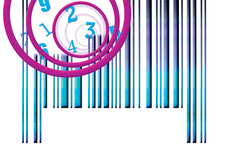A Perl script catalogs books and CDs with the help of barcodes
Checkout

Barcodes efficiently speed us through supermarket checkout lines, but the technology is also useful for totally different applications. An inexpensive barcode scanner can help you organize your private library, CD, or DVD collection.
Dealextreme.com, a company from Hong Kong, offers all kinds of inexpensive goodies. Customers can pay with PayPal, and shipping is free. Interested in a laser pointer for less than two dollars or a SATA/IDE adapter for just eight dollars? If you don't mind waiting up to two weeks for delivery, you're guaranteed to find a bargain with Dealextreme.
For quite a while I had my eye on the CCD-based barcode scanner for US$ 42 dollars (see Figure 1) (one of Dealextreme's most expensive products [2]) before I finally pressed the Buy button.
[...]
Buy this article as PDF
(incl. VAT)
Buy Linux Magazine
Subscribe to our Linux Newsletters
Find Linux and Open Source Jobs
Subscribe to our ADMIN Newsletters
Support Our Work
Linux Magazine content is made possible with support from readers like you. Please consider contributing when you’ve found an article to be beneficial.

News
-
Zorin OS 18 Hits over a Million Downloads
If you doubt Linux isn't gaining popularity, you only have to look at Zorin OS's download numbers.
-
TUXEDO Computers Scraps Snapdragon X1E-Based Laptop
Due to issues with a Snapdragon CPU, TUXEDO Computers has cancelled its plans to release a laptop based on this elite hardware.
-
Debian Unleashes Debian Libre Live
Debian Libre Live keeps your machine free of proprietary software.
-
Valve Announces Pending Release of Steam Machine
Shout it to the heavens: Steam Machine, powered by Linux, is set to arrive in 2026.
-
Happy Birthday, ADMIN Magazine!
ADMIN is celebrating its 15th anniversary with issue #90.
-
Another Linux Malware Discovered
Russian hackers use Hyper-V to hide malware within Linux virtual machines.
-
TUXEDO Computers Announces a New InfinityBook
TUXEDO Computers is at it again with a new InfinityBook that will meet your professional and gaming needs.
-
SUSE Dives into the Agentic AI Pool
SUSE becomes the first open source company to adopt agentic AI with SUSE Enterprise Linux 16.
-
Linux Now Runs Most Windows Games
The latest data shows that nearly 90 percent of Windows games can be played on Linux.
-
Fedora 43 Has Finally Landed
The Fedora Linux developers have announced their latest release, Fedora 43.

